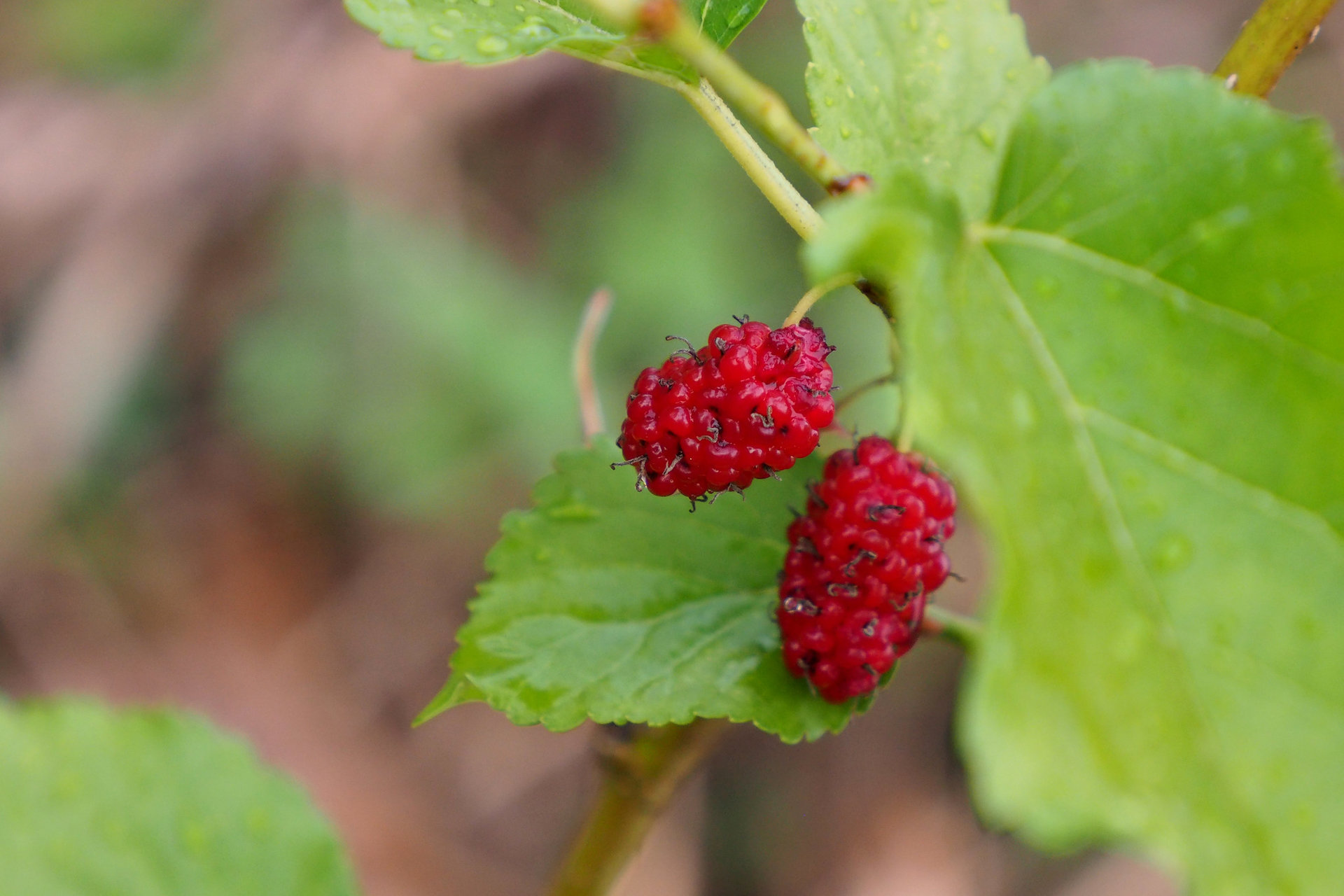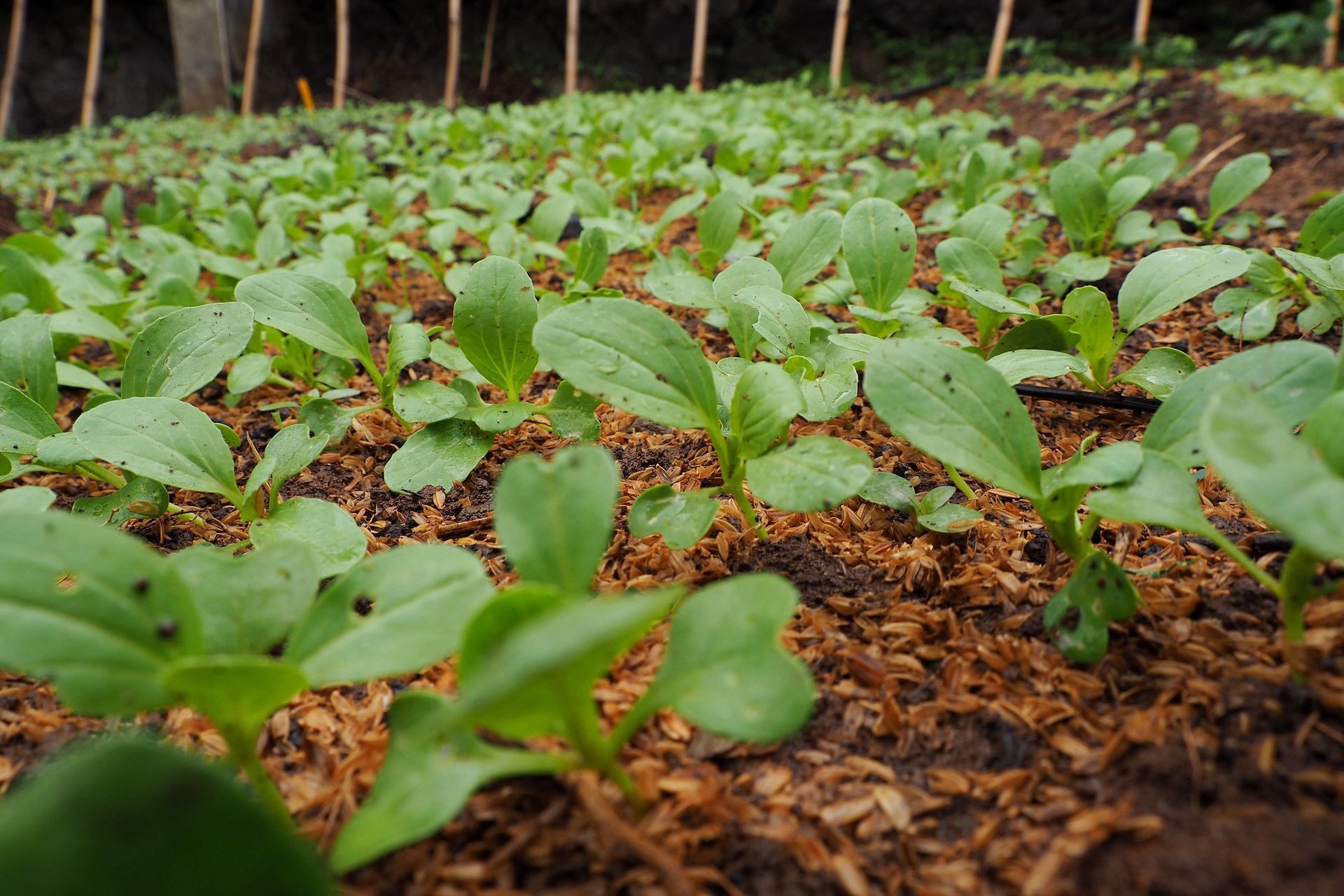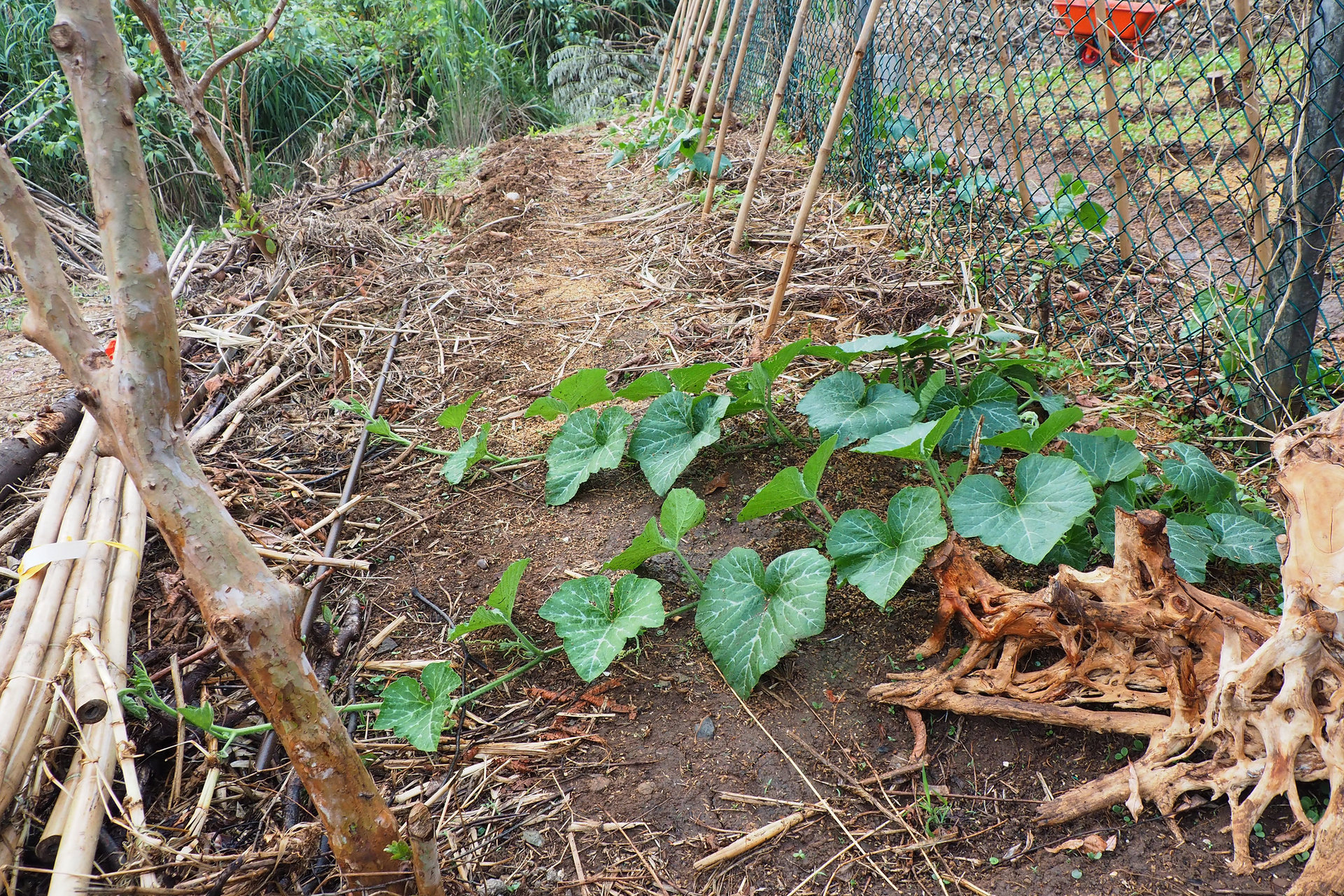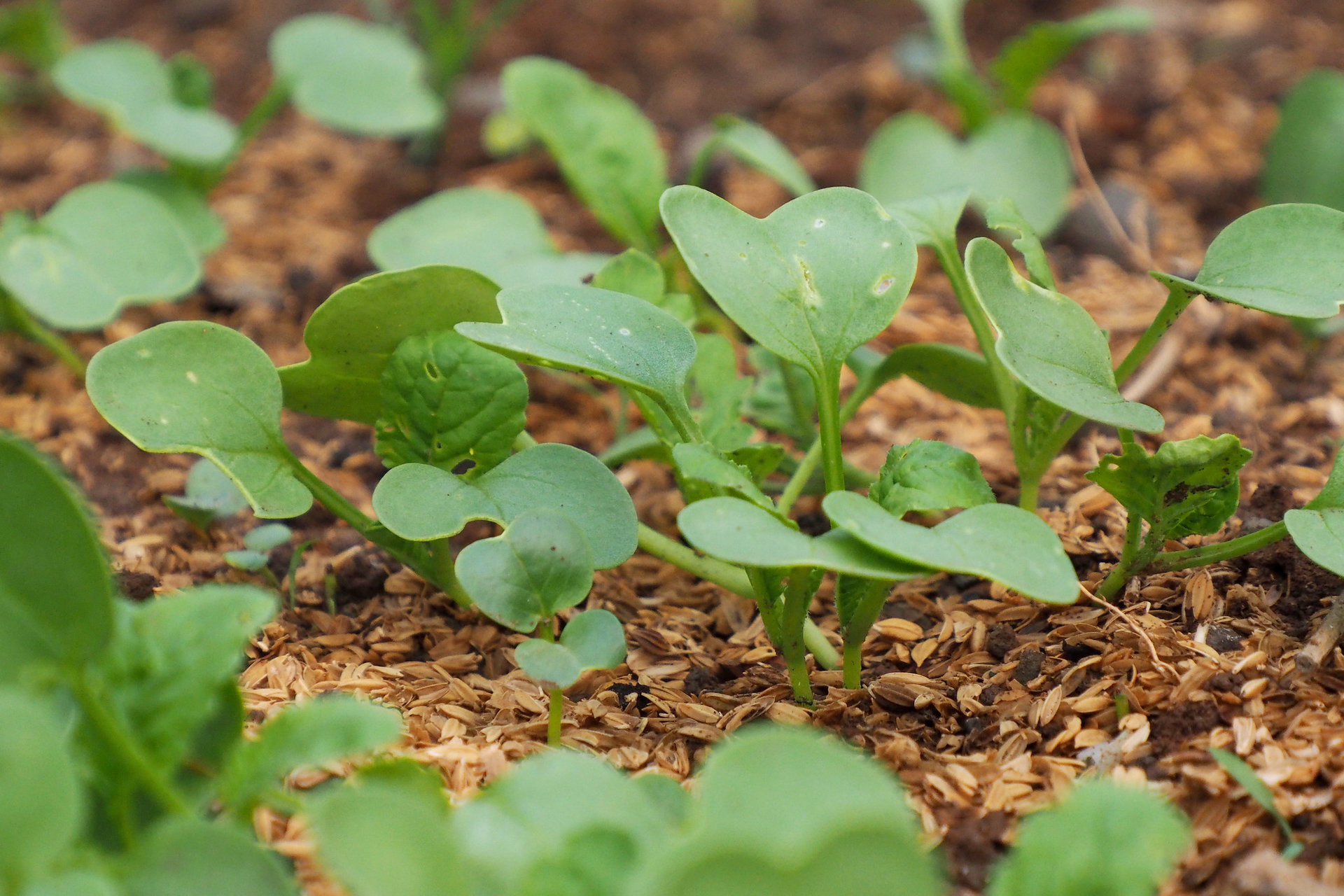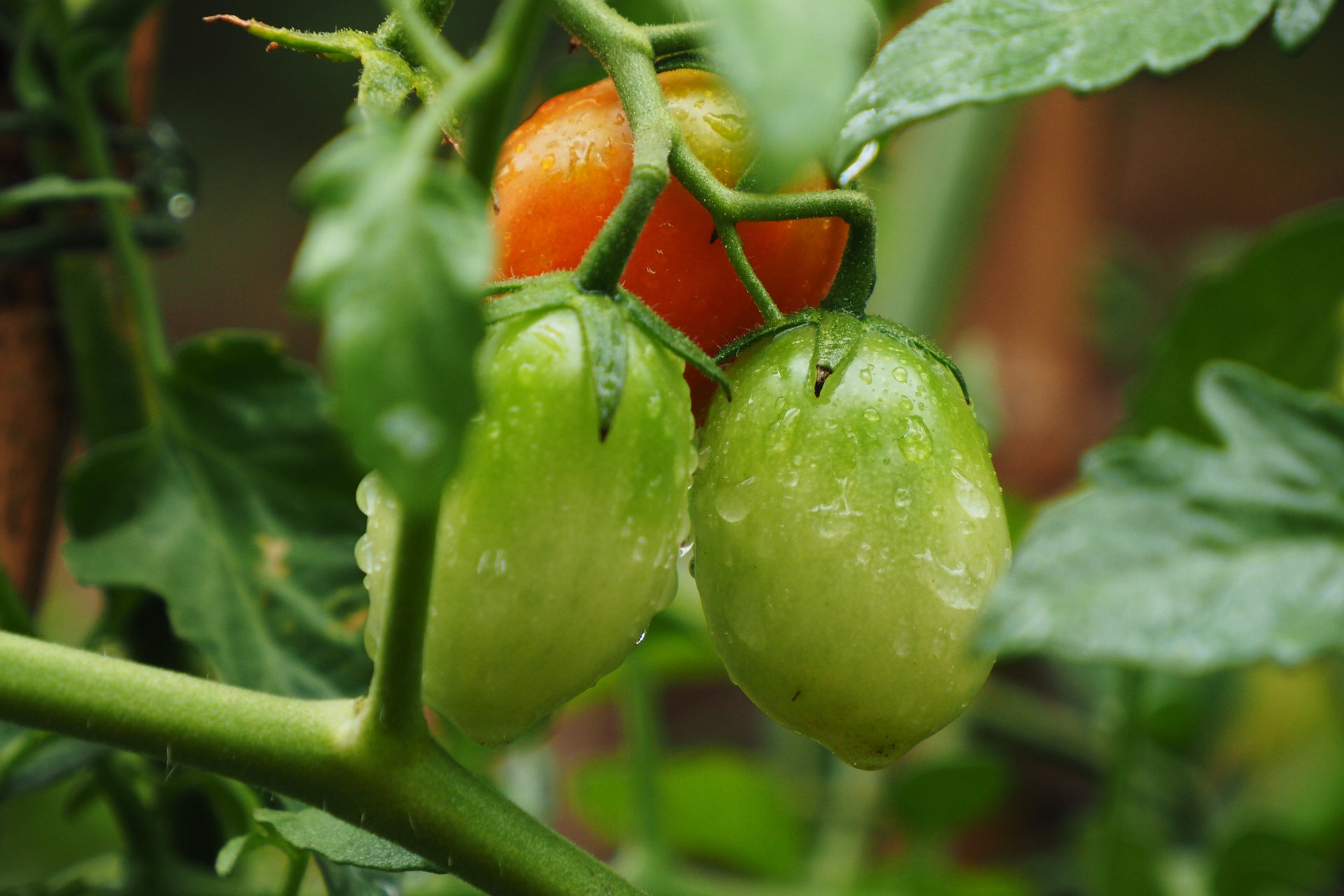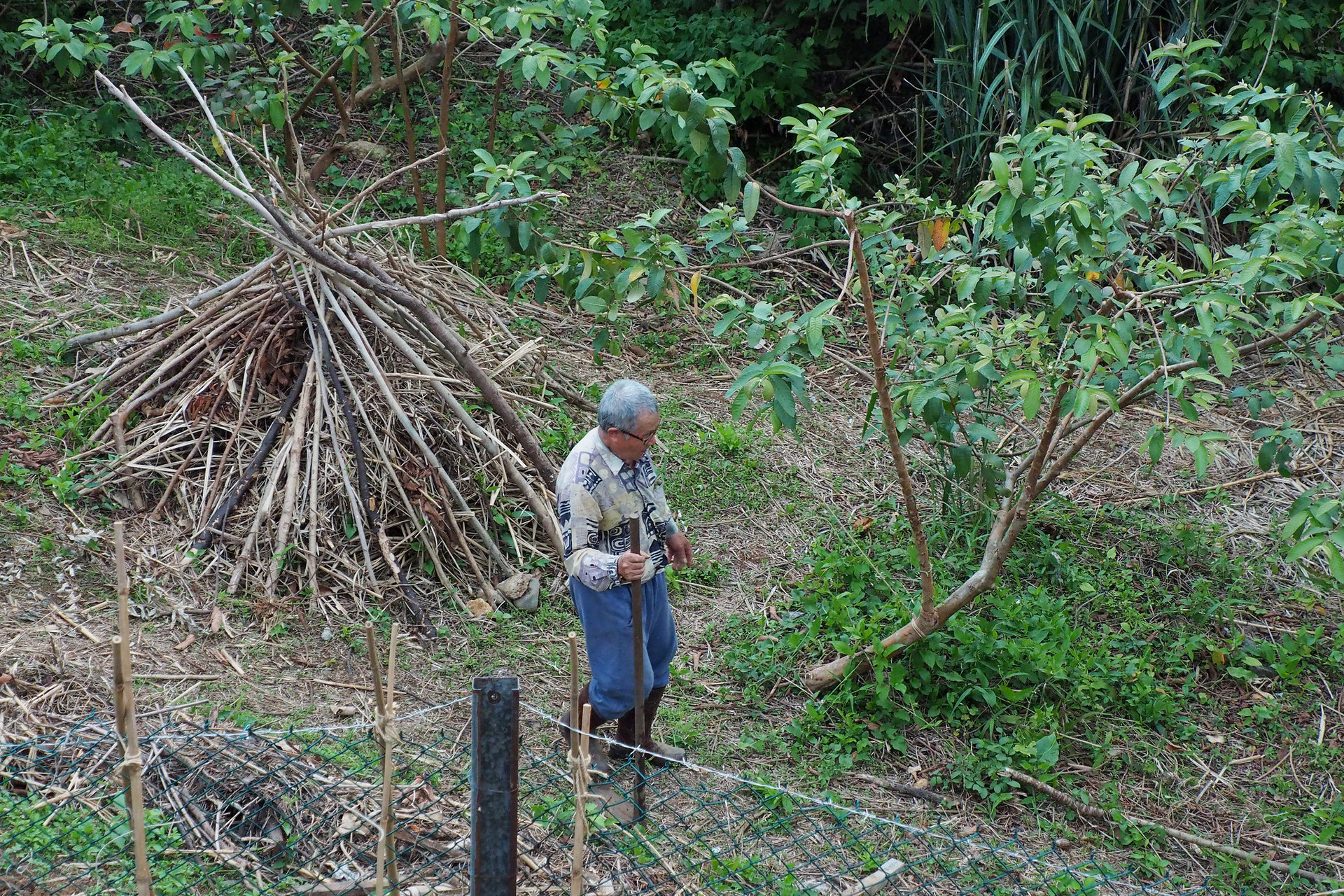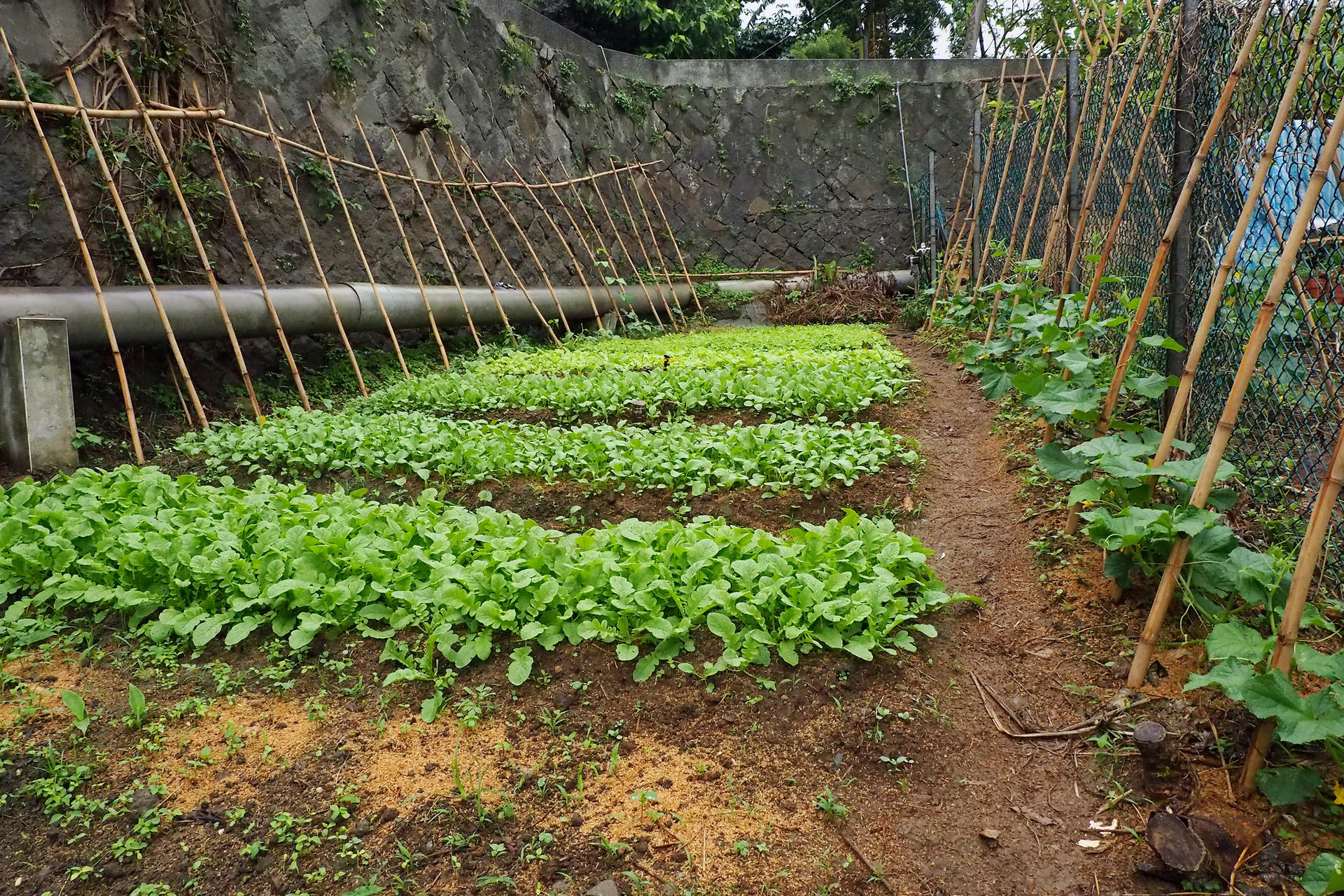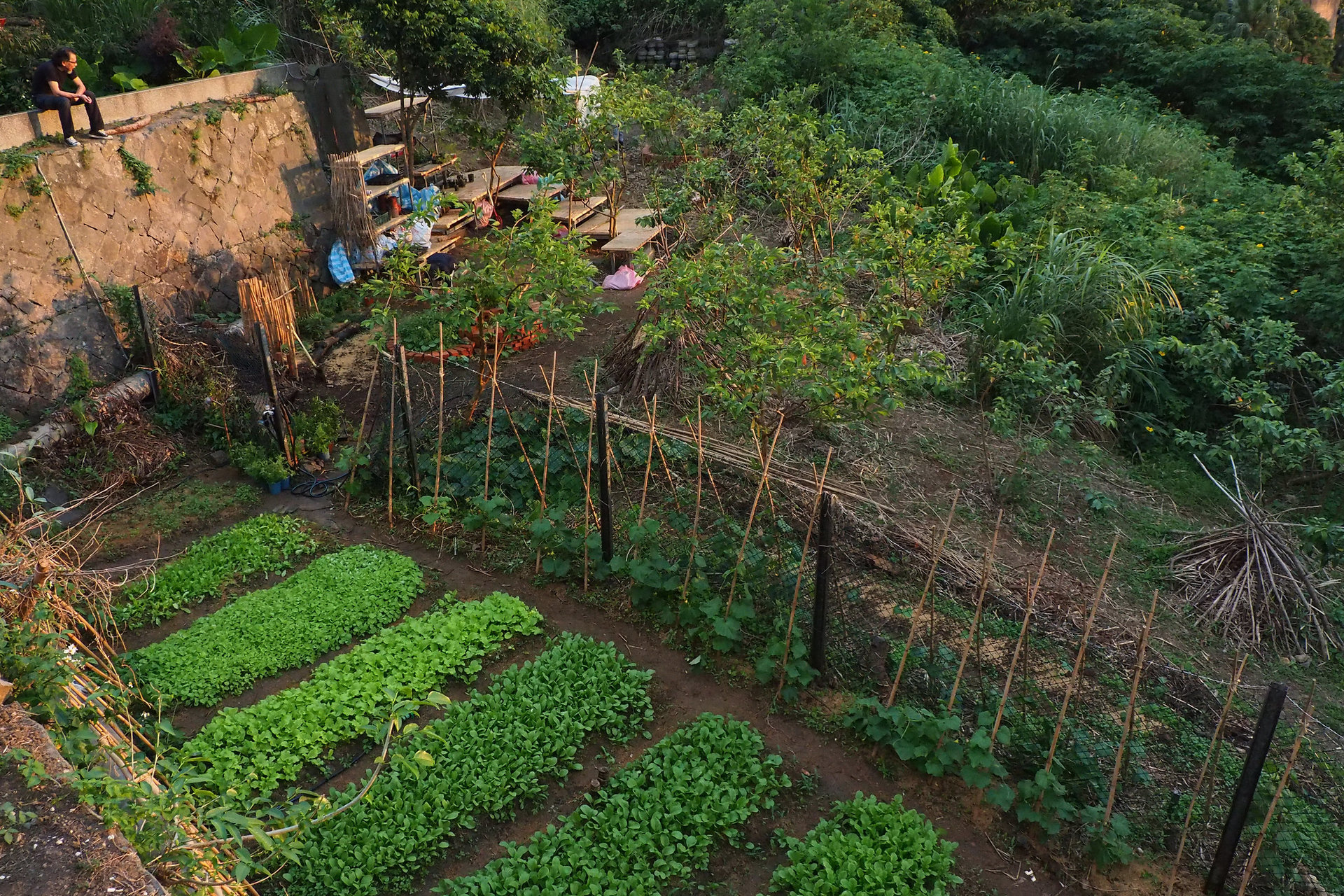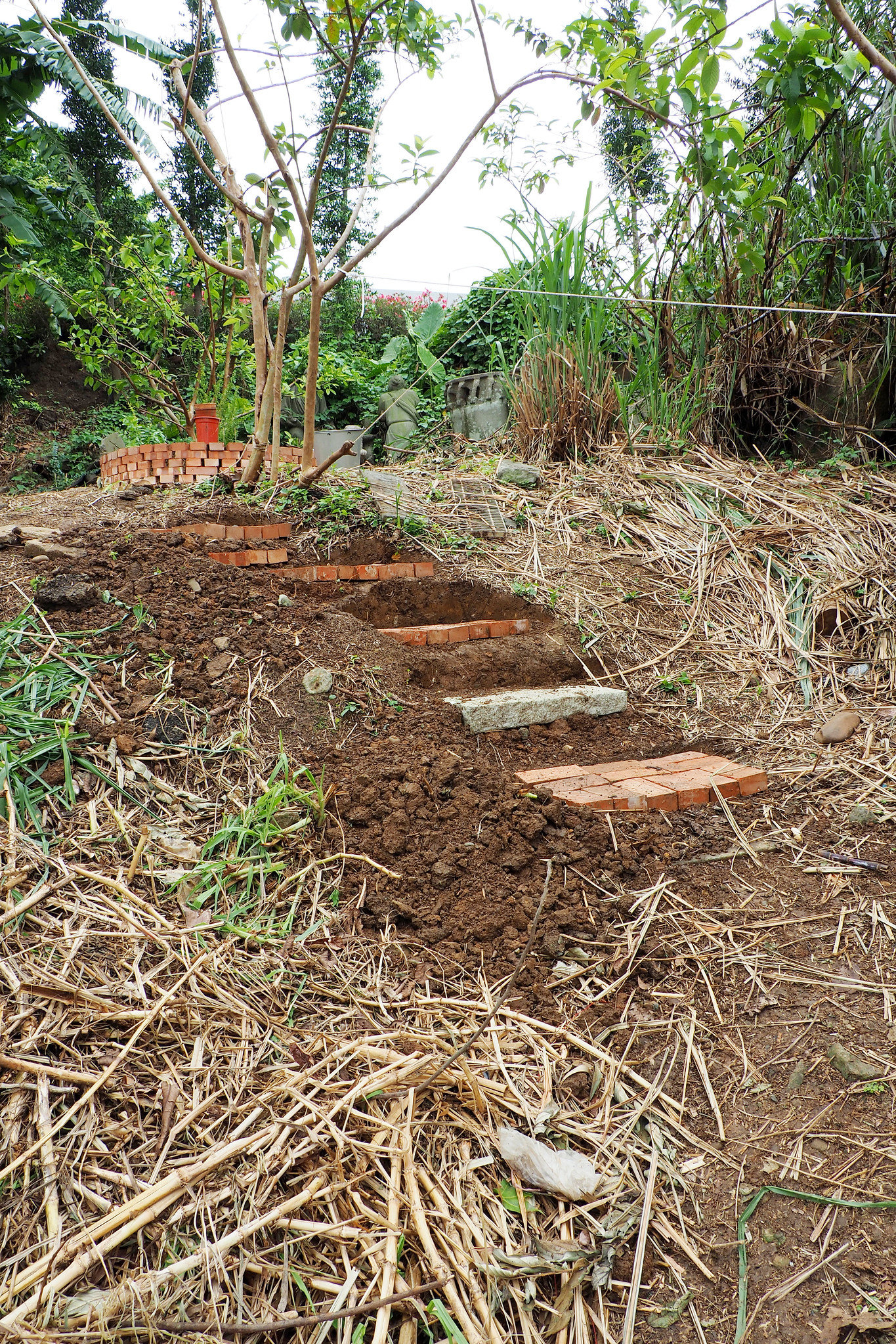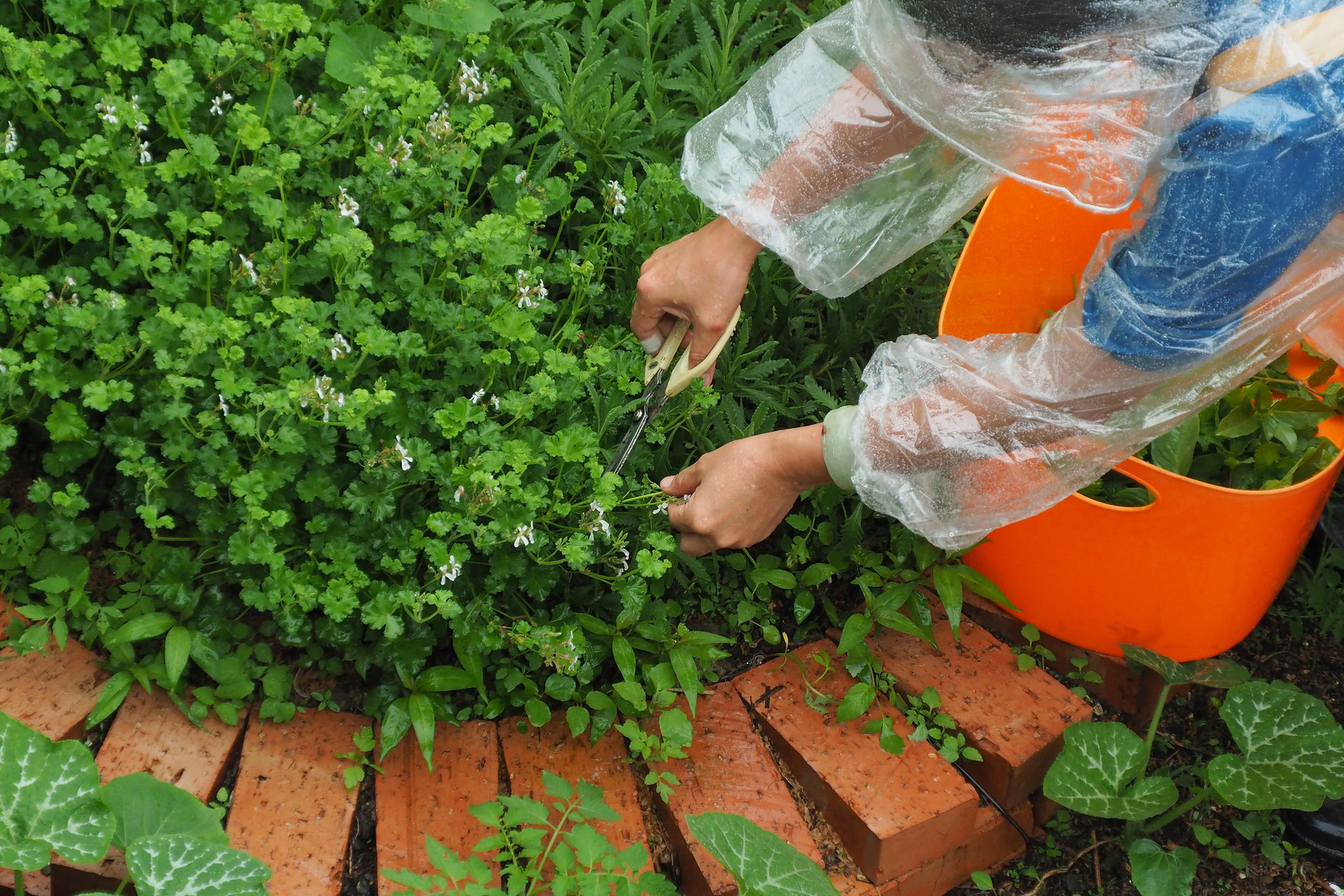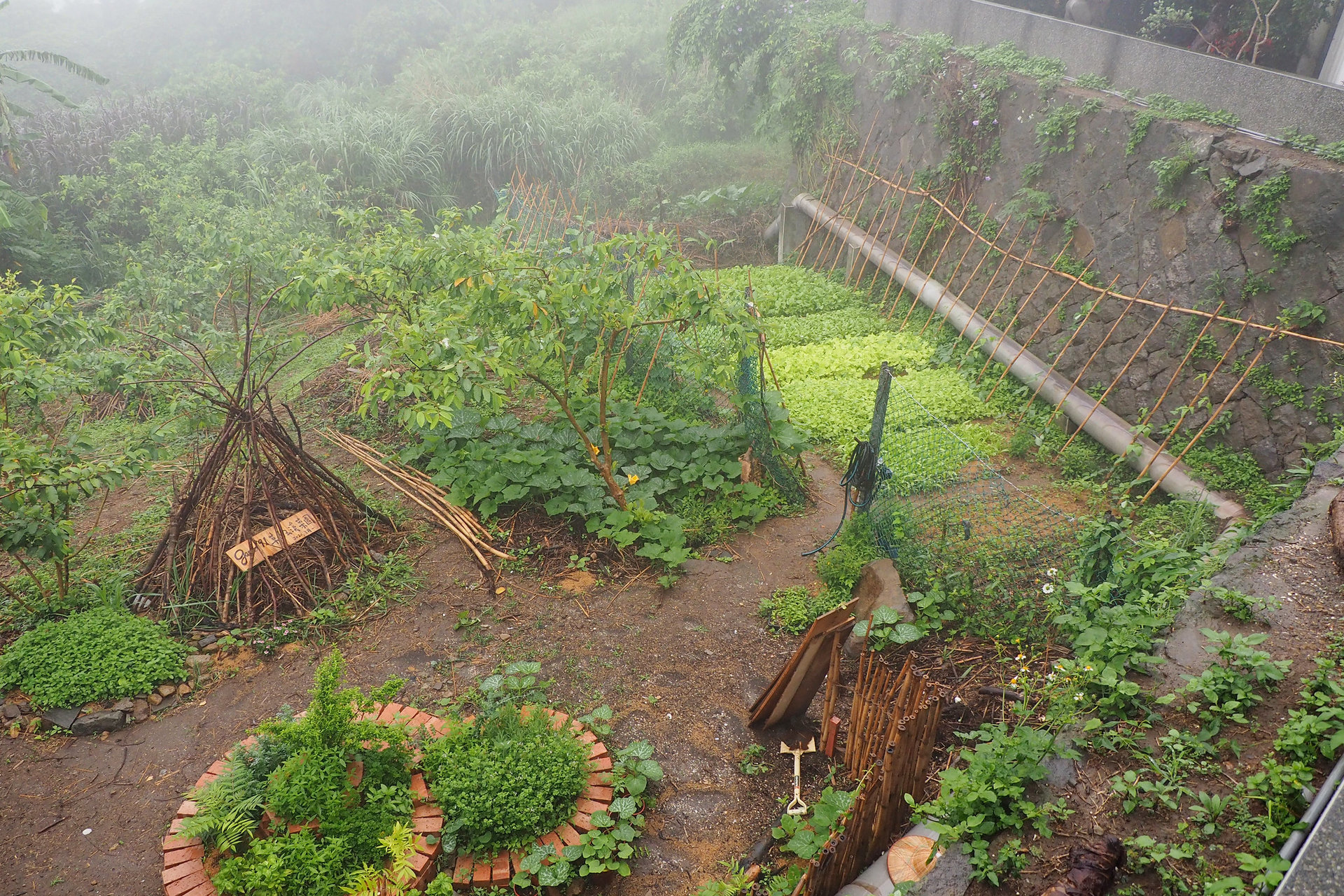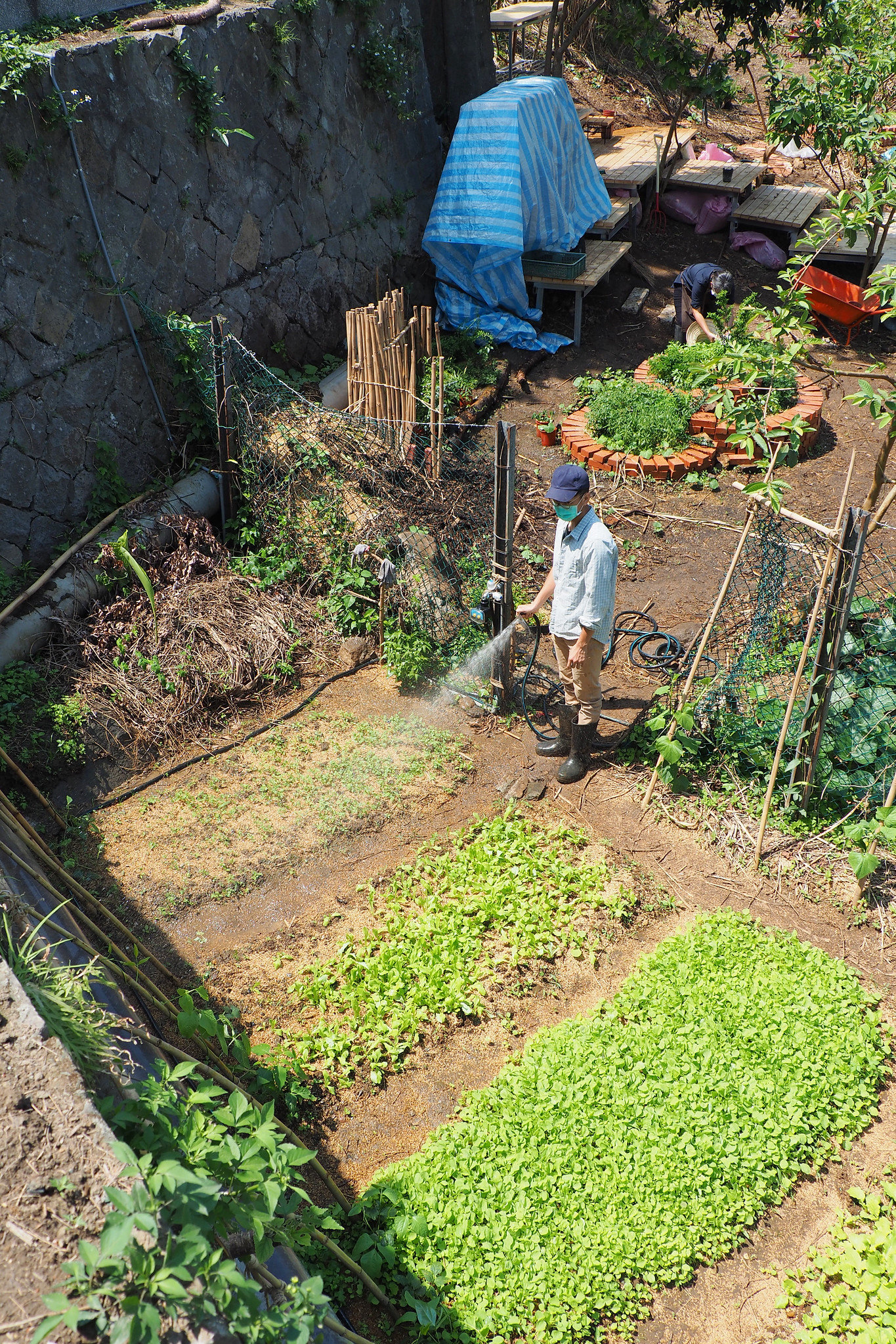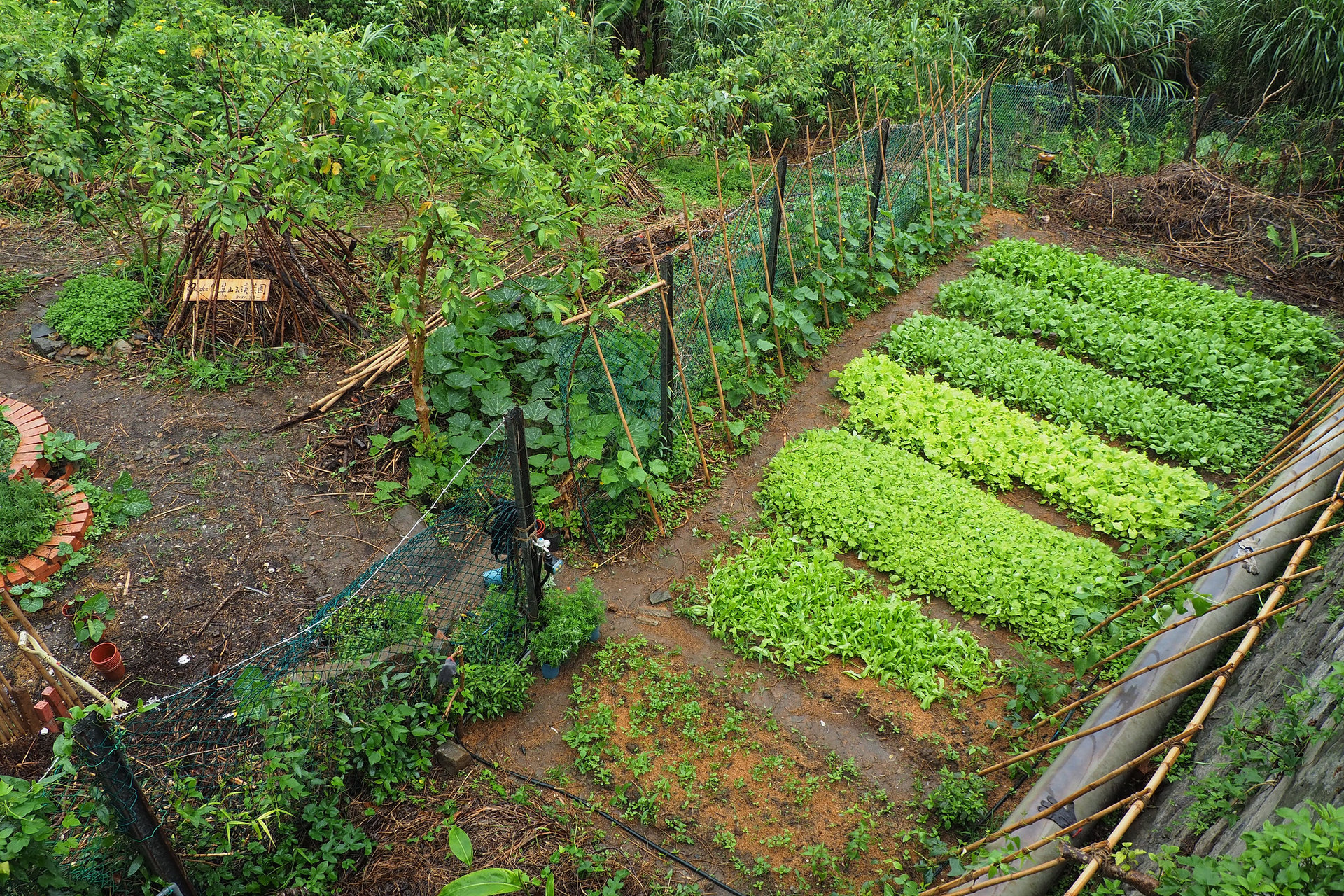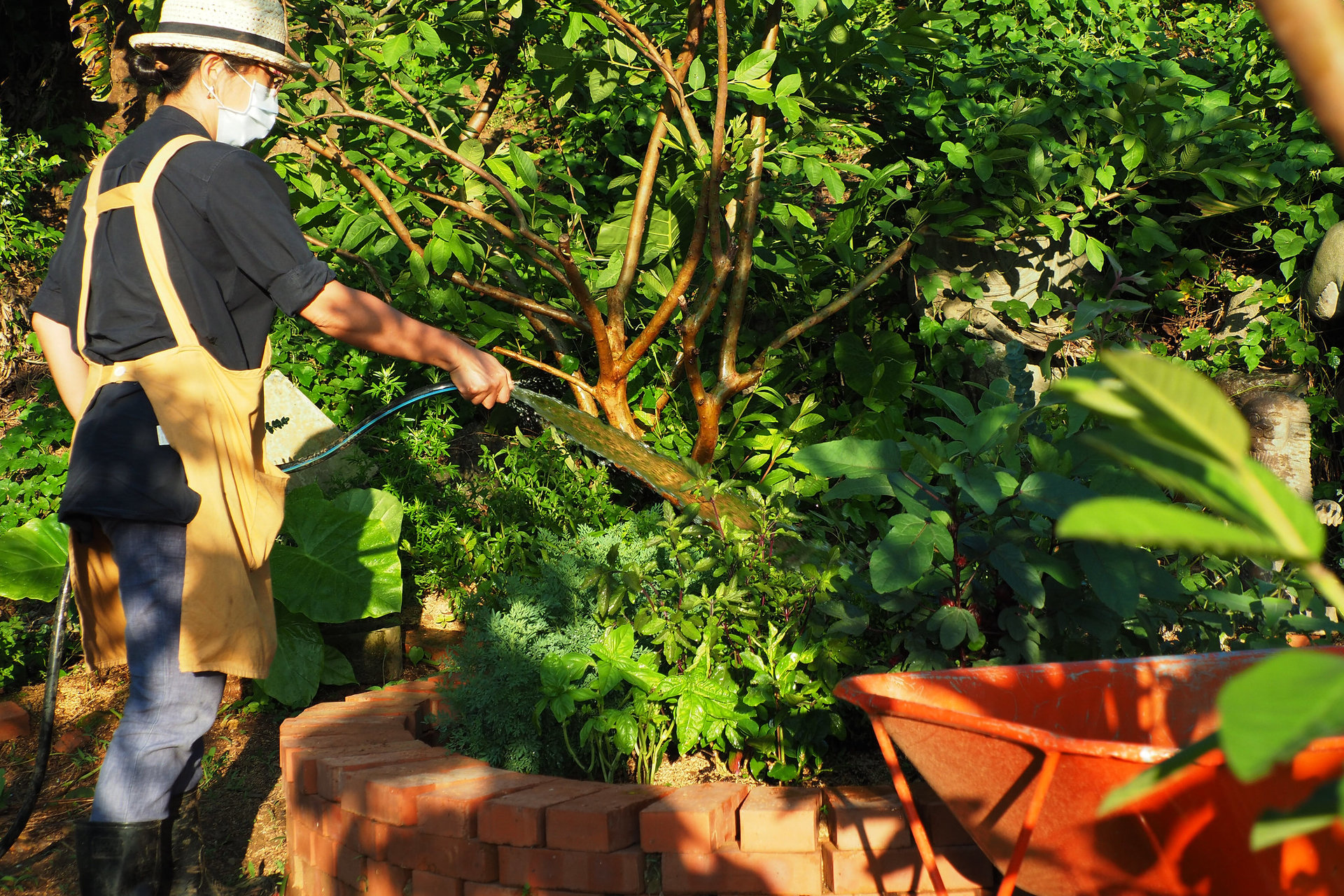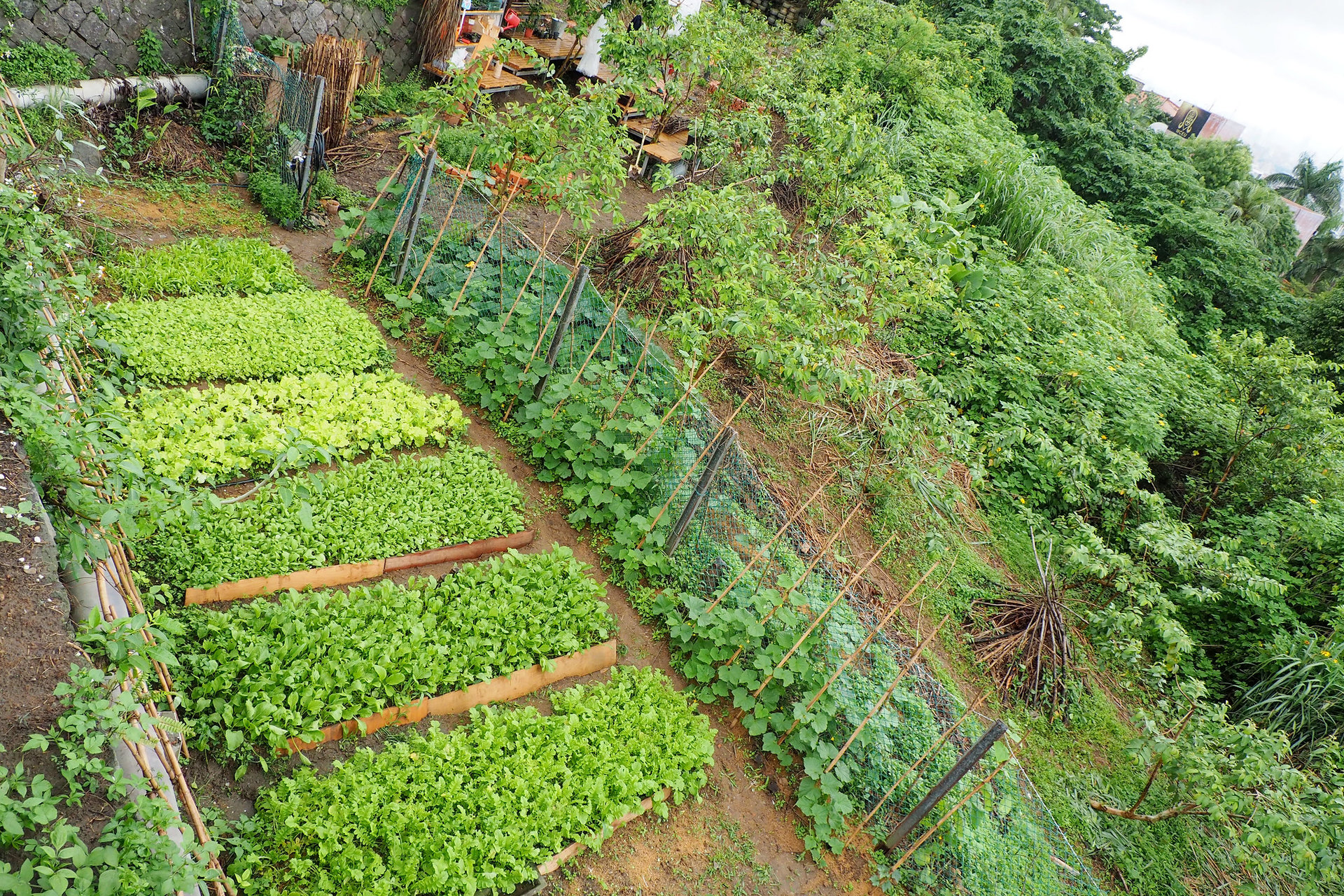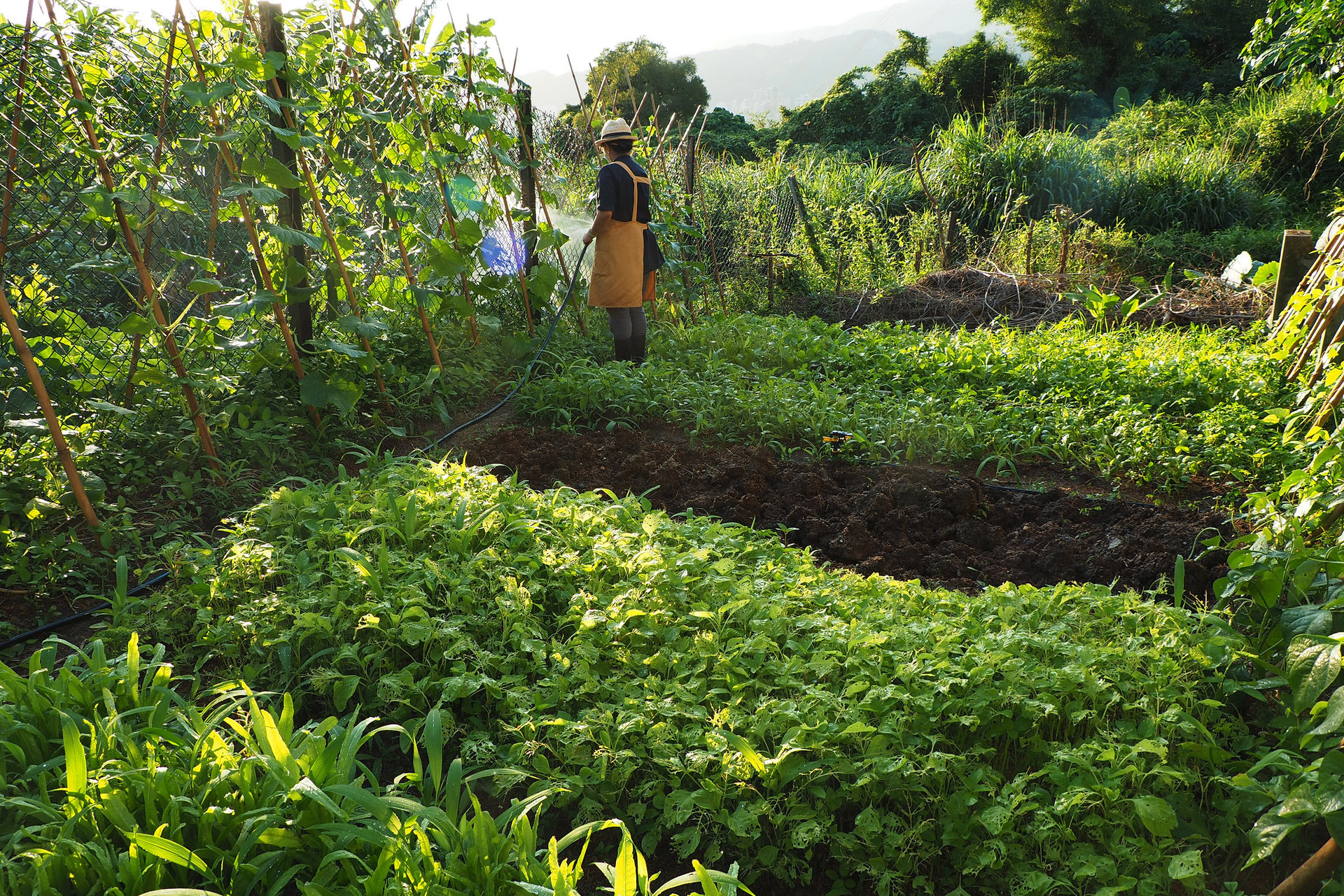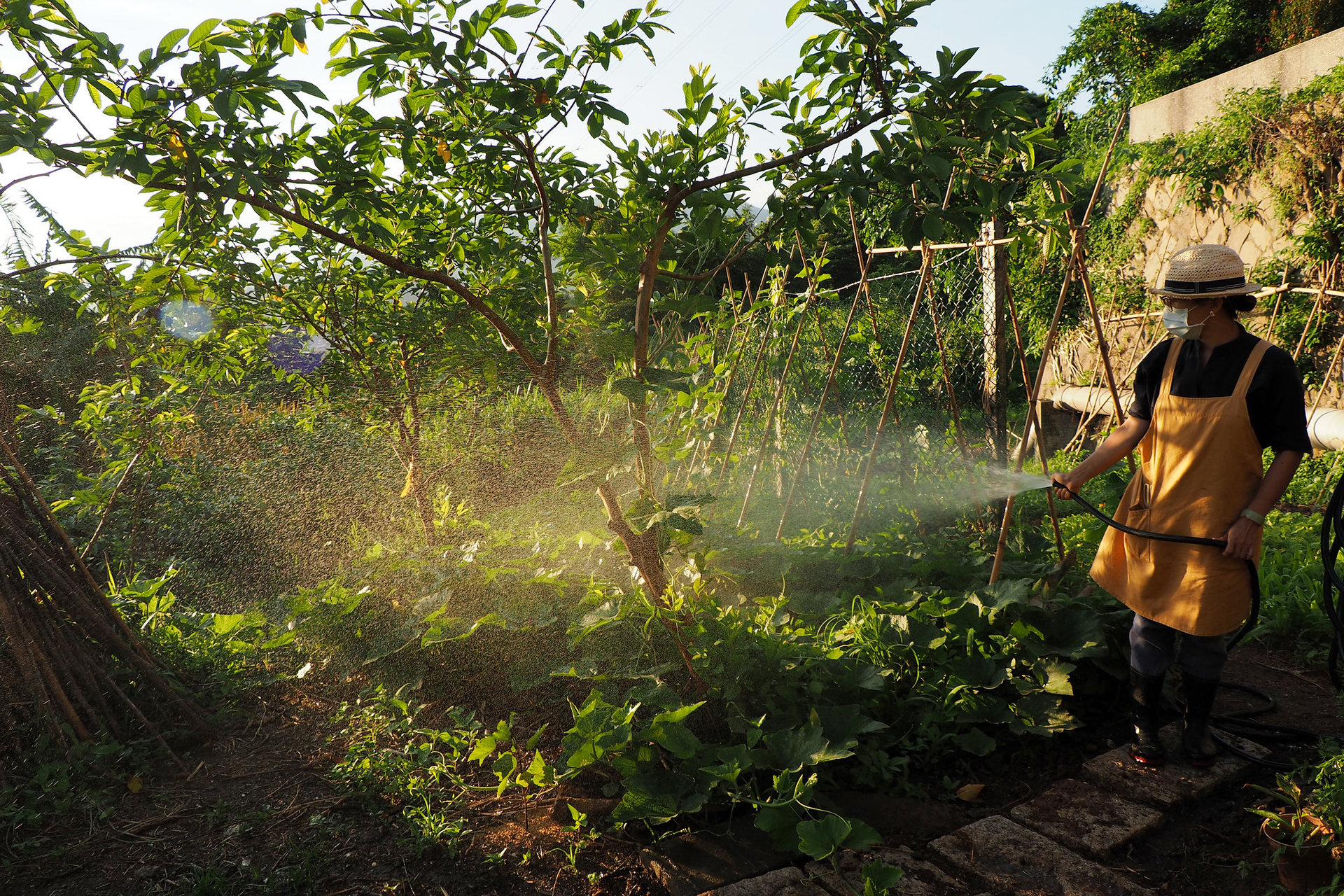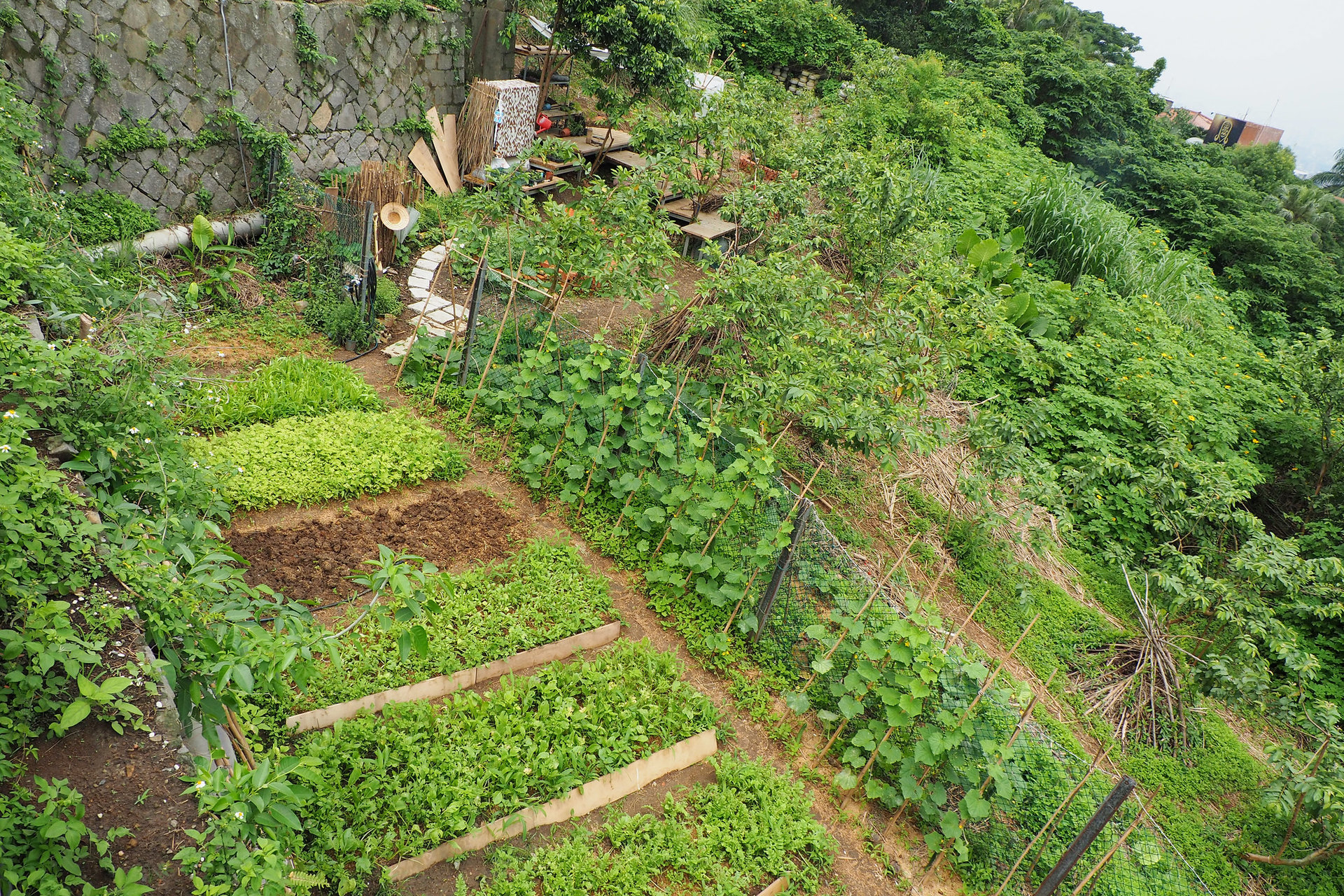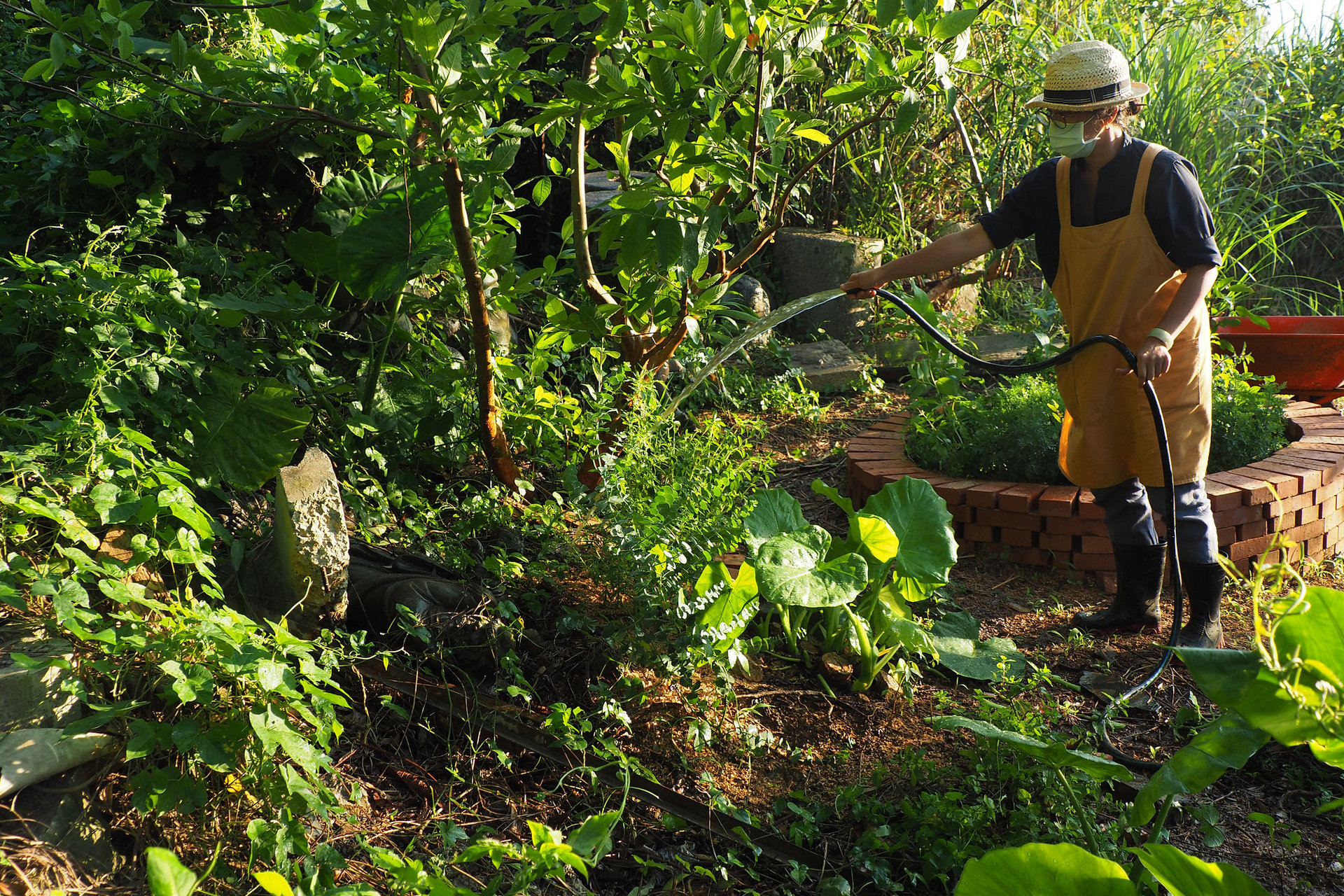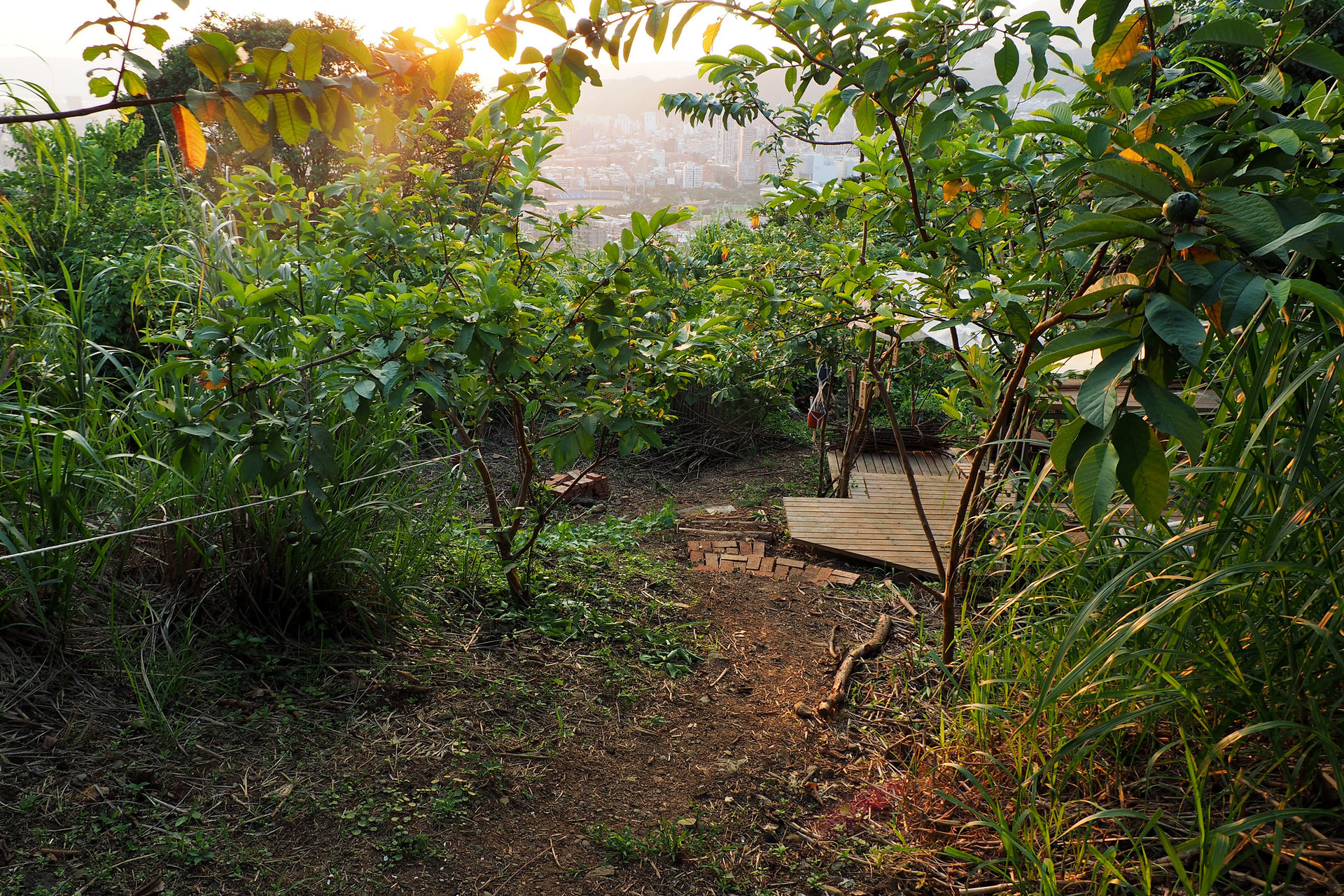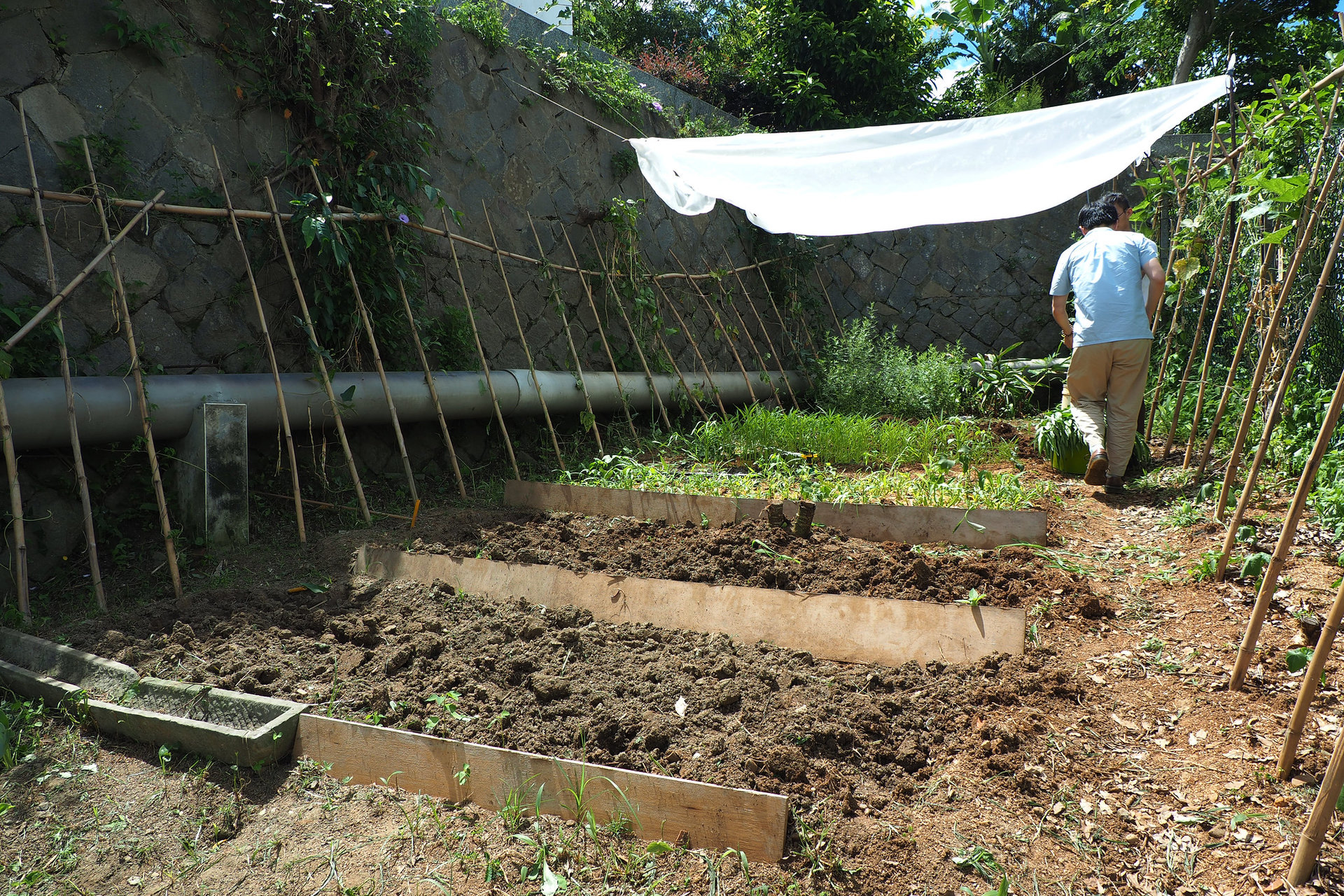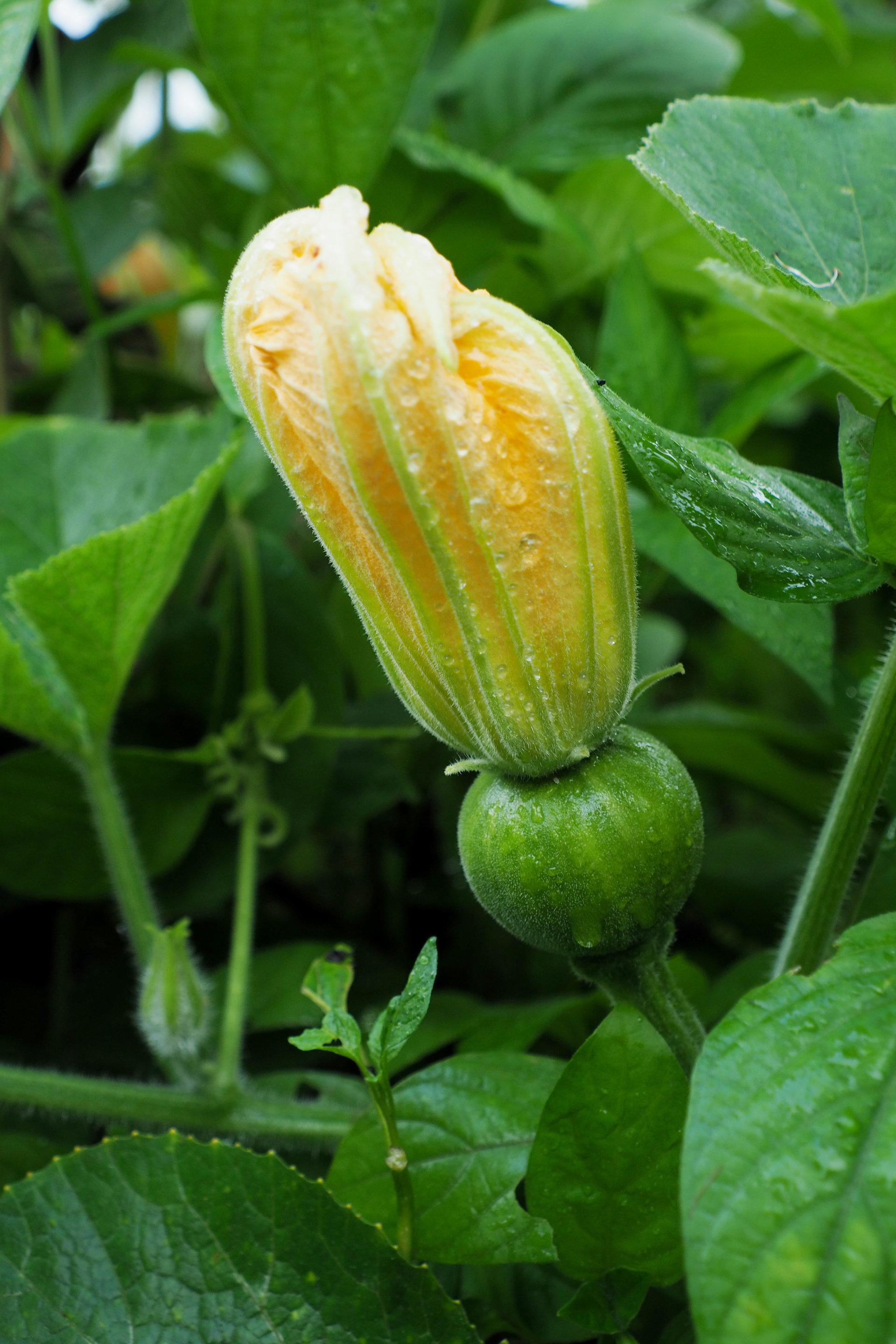The epidemic peaked in March. Five of us colleagues were divided into two groups; one managed the operations in the museum; the other went into the fields and reclaimed wasteland. Luckily our kind neighbor, who farmed half of his life, shared with us his experiences and knowledge of farming. He taught the two-man-farming team how to prepare soils and cultivate seedlings. In addition, we sometimes get visits from our cat inspectors!
We can also have the opportunity to experiment and realize our imagination of the land, referring to some new farming methods, such as building a red brick herbal tower for the elderly so that they can harvest more easily in the future without having to bend down. There are also waist-height potato towers, which is also a convenient way to harvest.
We do not use pesticides, so we know which type of leafy greens the insects love to eat.
We do not topdress fertilizers, so we know the quality of the soil here.
We do not expect any returns, so we keep farming and sharing with the insects.
Farming is a great teacher! Every detail contains knowledge, even philosophy.
More than anything, it teaches people concentration and how to have an open mind.
After two months, we have our happy vegetable garden on the sloping land where there were many guavas. The garden now grows cucumber, loofah, chayote, long beans, amaranth, eggplant, pumpkin, roselle, lemon, and various herbs. There are also some good little saplings, all of whom are striving and thriving. In addition to the circle of life, everything has cycles and seasons. And for that, we learn to be grateful.
This is a realm of life we create during a tumultuous time in the pandemics. I hope that the seeds and seedlings we bred can be shared with everyone in the future as a humble gesture to benefit society slightly.

